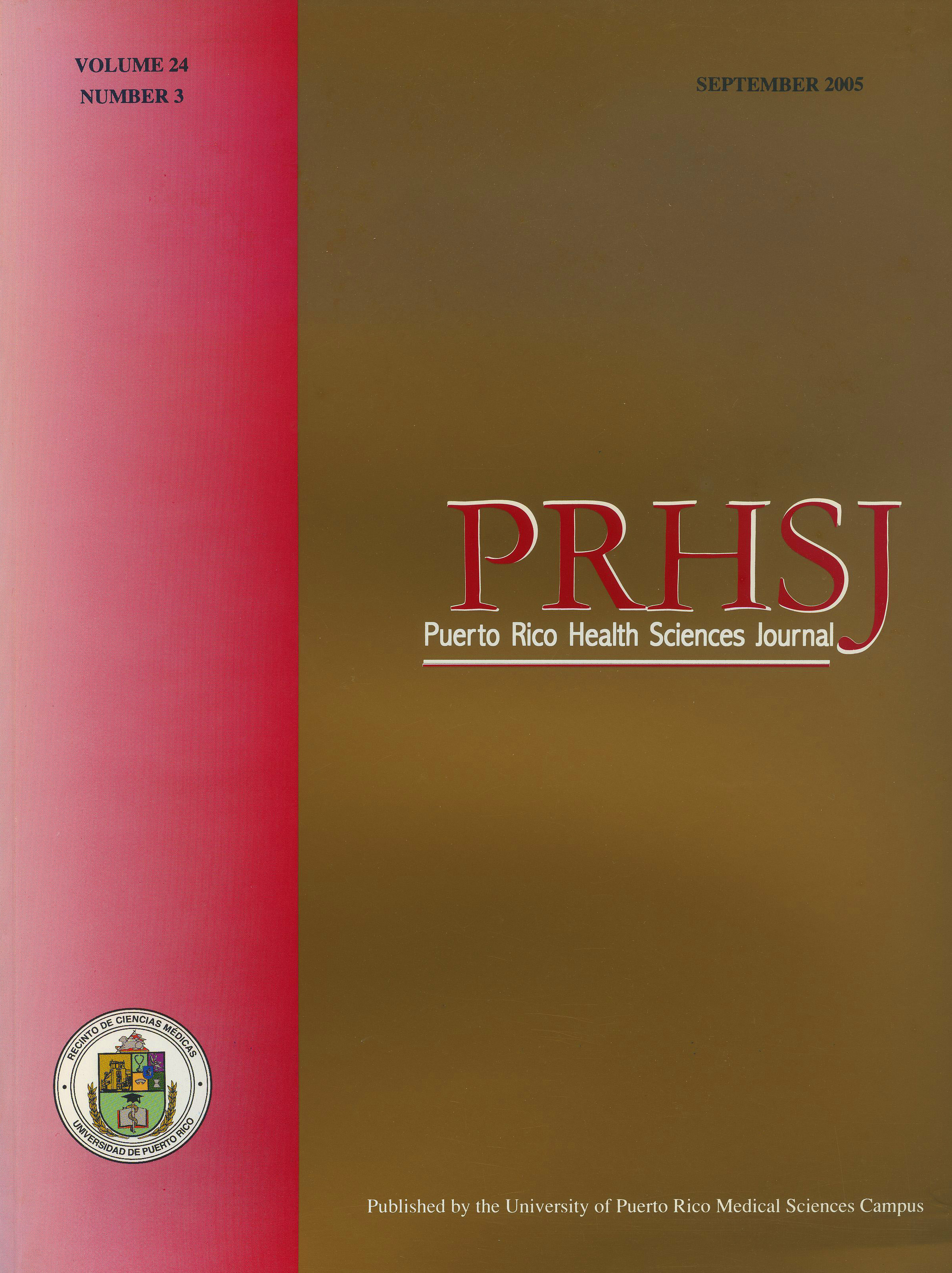Resumen
Background. Several studies indicate that approximately 4.6 % of the Puerto Rican Population has been affected by depression at some time in their life. Perimenopausal women have been one of the most frequently mentioned population in scientific literature prone to develop depression. Sociodemographic factors along with medical history have been hypothesized to be associated with the development of depression. This study has the purpose to know the prevalence of depressive symptoms in a sample of women age 40 to 55 years attending a gynecological outpatient clinic in the Medical Sciences Campus of the University of Puerto Rico. We also want to identify sociodemographic risk factors that can predispose these women to develop depressive symptoms. Method. A cross sectional study was done during the months of June 2000 thru December 2000. Female subjects age 40 to 55 selected by availability. The Zung Self-Rating Depression Scale (1995 Spanish Version) and a questionnaire were administered to each subject. Results. The overall prevalence of depressive symptoms in this sample of 64 women was 39.1 %. Among the variables considered as possible associated risk factors for the development of depressive symptoms, educational level, prior visit to a mental health professional or a spiritual guide, and prior diagnosis of depression and antidepressant use were of statistical significance. Discussion. A high prevalence of depressive symptoms was found in this sample. As reported in other studies, higher educational level is a protective factor against depression. Contrary of other studies, no association is found between depression and other sociodemographic and medial factors.
Authors who publish with this journal agree to the following terms:
a. Authors retain copyright and grant the journal right of first publication with the work simultaneously licensed under a Creative Commons Attribution License that allows others to share the work with an acknowledgement of the work's authorship and initial publication in this journal.
b. Authors are able to enter into separate, additional contractual arrangements for the non-exclusive distribution of the journal's published version of the work (e.g., post it to an institutional repository or publish it in a book), with an acknowledgement of its initial publication in this journal.
c. Authors are permitted and encouraged to post their work online (e.g., in institutional repositories or on their website) prior to and during the submission process, as it can lead to productive exchanges, as well as earlier and greater citation of published work (See The Effect of Open Access).
